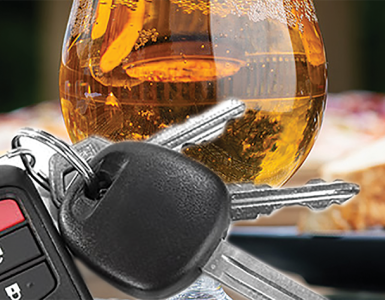COLLISION: Insurers use advanced tracking systems to probe and validate insurance claims
By Thuli Zungu
One of the cases that ombudsman for the short-term insurance handled which proved that with the latest advanced tracking system the consumer could not misrepresent their whereabouts, speed and driving patterns.
On December 13 2018, Mr P was driving Mr M’s vehicle when he claimed he saw a dog running across the road and swerved to avoid it.
In doing so, he lost control of the vehicle and collided with a tree on the side of the road and then a school fence. The vehicle was taken for assessment and declared uneconomical to repair. The insurer also commenced with the validation of the claim and appointed an expert to determine the speed at which the vehicle was driven at the time of the collision.
The report could show when the ignition of the vehicle was switched on, the speed and detected harsh braking.
In this case three experts were appointed to determine the speed of the car when the driver reportedly swerved to hit the fence. They all came up with varying speeds, resulting in the insurance company rejecting the claim.
The insurer rejected the claim on the grounds that Mr P did not take due care and precaution to prevent the accident. The insurer based its decision on the digital data from the vehicle and on Mr P’s submission that he travelled at a speed of between 100 – 120 km/h in a 60 km/h zone.
The terms and conditions of the policy state he had a responsibility to take all reasonable steps and precautions to prevent any accidents or losses that occur.
Mr M argued that the insurer had no grounds on which to reject the claim since all three experts arrived at different conclusions.
The insured specifically objected to the insurer’s use of the first expert’s report on the basis that this expert never inspected the scene of the accident. Mr M stated that the expert made a mistake regarding the direction of travel of the vehicle, a fact which the insurer conceded and rectified.
Mr M argued that the first expert’s mistake cast doubt on the correctness of the entire report.
Mr M also disagreed that the vehicle had travelled at a speed of 138 km/h. He argued that the vehicle could not reach this speed within the short distance travelled.
In support of this argument Mr M supplied video footage of himself driving around the bend before the accident.
The purpose of this was to demonstrate that the vehicle could not have negotiated the bend at 138 km/h or accelerated enough to reach this speed. Mr M also argued that the speed recorded on the tracking report is accurate and should be considered as it demonstrated that the vehicle was not travelling at a high speed.
The insurer conceded that the findings of the three experts were different and contradictory. The insurer, nevertheless, maintained its reliance on the first expert’s report. The insurer stated that the extensive damage sustained by the vehicle in the accident suggested that the vehicle was travelling at a far higher speed than reported by Mr P. The insurer said that it was not plausible that the vehicle had travelled at the speeds determined by the second and third experts.
The insurer also pointed out that the first expert’s conclusion was based on digital data retrieved from the vehicle and was, therefore, more accurate and objective. The insurer argued that the three experts’ findings created a clear dispute of fact which meant that the complaint fell outside of OSTI’s jurisdiction.
The insurer argued further that the tracking report did not reflect the true speed of the vehicle and requested that Mr M obtain a buffer report. The buffer report revealed that a maximum speed of 85 km/h was reached by the vehicle before it collided with the tree. After reviewing all the evidence, OSTI recommended that the insurer reconsider its rejection of the claim on the grounds that the speeds reported by the experts were too far apart, as they ranged between 85 km/h and 138 km/h. OSTI pointed out that there was no dispute of fact between the parties since two of the insurer’s expert reports were consistent with the tracking report and that the insurer cannot declare a dispute of fact in respect of its own evidence.
OSTI advised that the speed at which the vehicle was driven was not sufficient to justify a rejection of the claim on the grounds that Mr P failed to exercise due care or take reasonable precautions to prevent the loss.
OSTI noted that the standard for recklessness had not been proven by the insurer. Mr P was faced with a sudden emergency when a dog ran across the road. Mr P lost control of the vehicle when he attempted to avoid a collision with the dog. This version had not been disproved by the insurer.
OSTI found that the insurer had not discharged the onus of proving, on a balance of probabilities, that Mr P had failed to exercise due care or take reasonable precautions to avoid the accident. Accordingly, OSTI recommended that Mr M’s claim be settled. The insurer agreed to indemnify Mr M for the accident. It also agreed to refund the towing and storage costs. As a gesture of goodwill, the insurer also refunded the service fees and interest charged on the finance agreement from the date of loss.


































